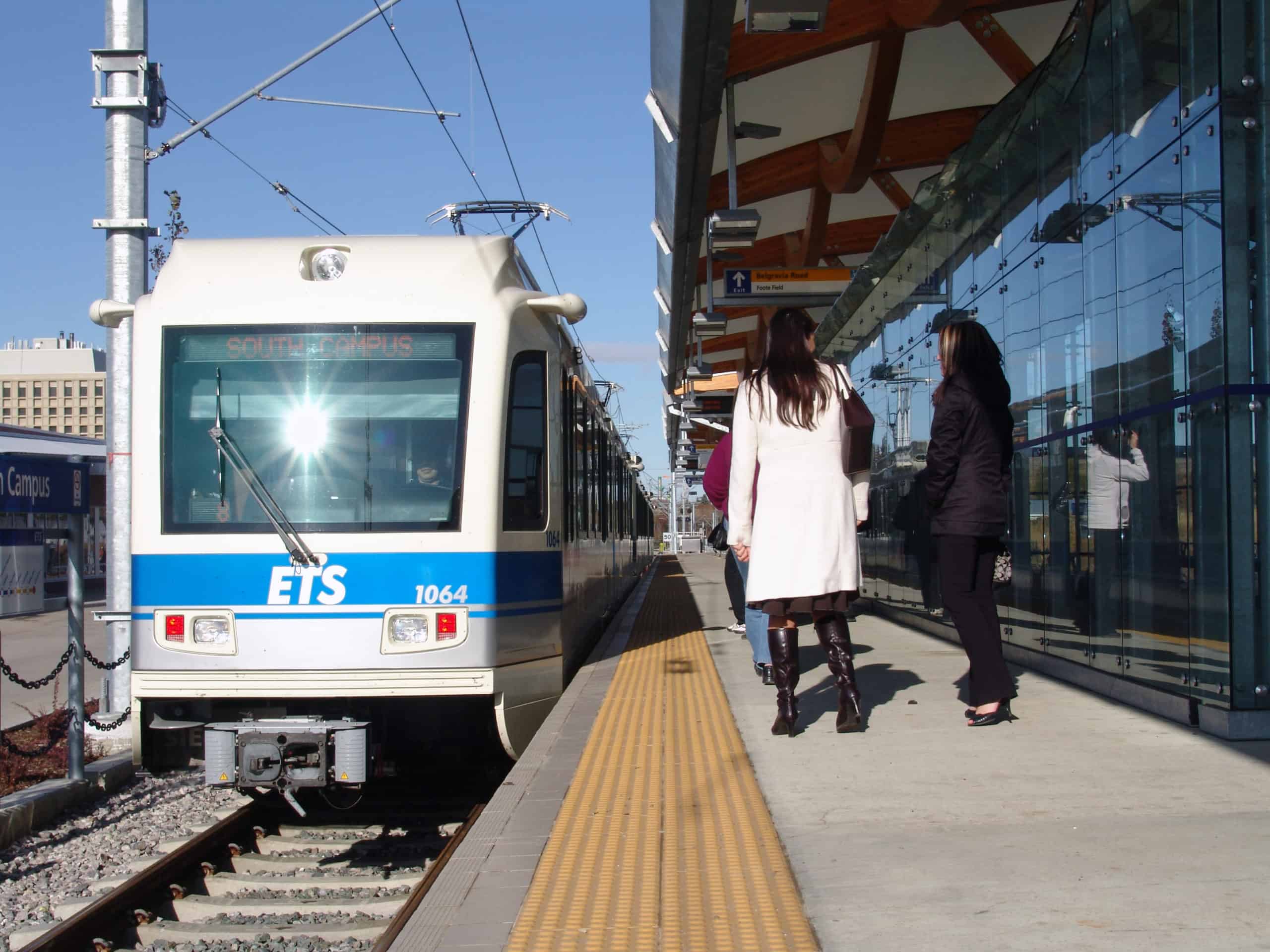Boosts to city transit safety
Reports of hate, violence, and crime at transit centres and on transit have led the City of Edmonton to create and implement new safety strategies.
“I have been taking the LRT since late April and have felt uncomfortable in some situations, especially if I am the only person in a car, which has happened quite a few times on the NAIT line,” says Maggie Glasgow, an Alberta Avenue resident. “I have also very often had johns flash their lights at me while waiting at the bus stops — before COVID. It makes me so angry.”
When the City implemented a greater police presence on transit in May 2022, Glasgow felt safer and started using the train more often.
“I won’t take transit at all anymore if I’m alone. Too many close calls with aggressive folks, most being some variety of intoxicated,” says Alberta Avenue resident, Melanie Greenfield.
In response to transit safety concerns, city council approved the enhanced Transit Safety and Security Plan in February 2022. “In this plan, the City, the Edmonton Police Service, and Bent Arrow Traditional Healing Society recommended a safety approach to prevent crime and connect people experiencing homelessness, and who use the transit system for shelter, to housing options, mental health and addictions support,” says Sarah Feldman, director of the City’s workforce strategies, business development, and Edmonton Transit Service (ETS).
Additionally, the Community Outreach Transit Team (COTT) is a pilot program implemented in September 2021 to increase safety and support. It provides additional support to Edmontonians who use the transit system and need a referral to community resources like mental health care, financial assistance, housing, social services, health services, or other supports.
The team involves workers from Bent Arrow Traditional Healing Society and transit peace officers.

“[The] focus is to help the public, individuals in need that [are at] transit stations, [get] connected to services they need,” says Lloyd Yellowbird, the senior manager at Bent Arrow Traditional Healing Society. “If you look at the overall structure of the City’s services, one of the areas that there was a sort of a void in was providing services to people, like homeless people, that like to hang out at transit centres. So we get them connected to inner city services.”
“COTT’s daily engagements can include both proactive and reactive activities. COTT members proactively patrol the transit system, connecting with individuals, building relationships, and asking if they need support,” adds Feldman. “COTT also responds to calls from ETS control centre staff and other peace officers.”
The initiative was modelled after a similar program in Calgary, and so far, it has been successful. Feldman notes that COTT has interacted with more than 2,400 individuals, both to provide help and to share information about the initiative. Additionally, they have had 250 interactions where they referred individuals to other agencies and services for help.
“We’ve had a lot of success stories where we’ve connected people to family, to services,” says Yellowbird, “and just getting them back on their feet. So we’ve done a lot of really good stuff.”
City council approved extra funding for COTT in February, and that funding will be used to expand the initiative and add five more teams. Currently, there are only two COTT teams who work alternate shifts between 8 am and 10 pm on weekdays; however, transit runs from about 5 am to 2 am the next day. Feldman notes that the extra funding will help address the seven-hour service gap during the week and likely allow for service on the weekends.
Other transit safety projects are also in the works. In the fall, the City is implementing a campaign to “reduce gender-based violence and harassment in public spaces on transit property and in transit vehicles,” says Feldman. The campaign will be followed by a survey.
Transit users can also report harassment and other suspicious behaviour to ETS by texting or calling Transit Watch at 780-442-4900. “ETS staff monitor this text line around the clock and do their best to respond as quickly as they can,” says Feldman.







